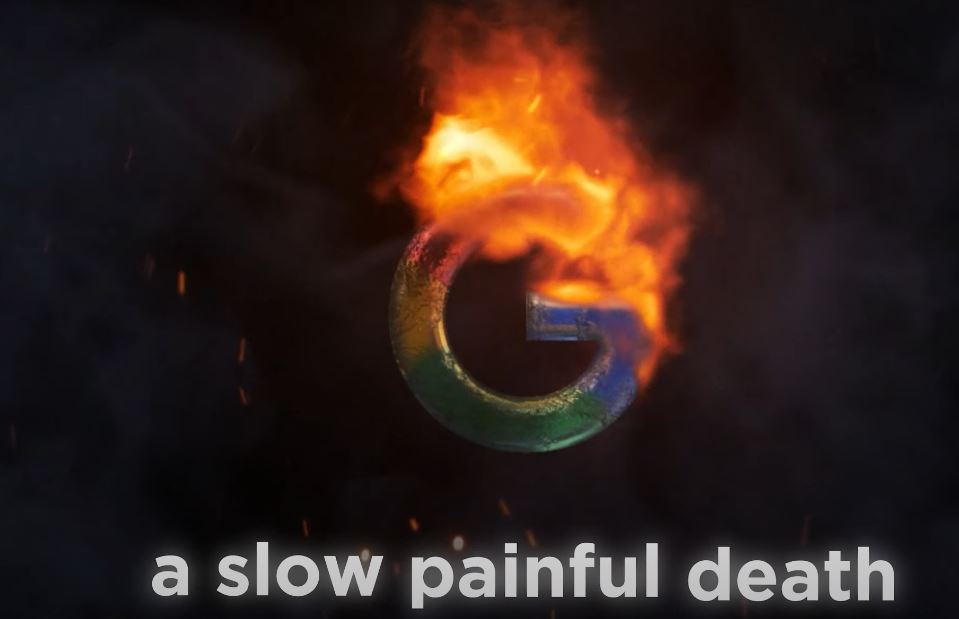The digital landscape is undergoing its most significant transformation since Google revolutionized search in the late 1990s. While website traffic isn't disappearing entirely, its sources and distribution are changing dramatically. The era of Google dominating 90%+ of search traffic is ending, replaced by a fragmented ecosystem where users search across multiple platforms including social media, AI chatbots, and specialized marketplaces. This shift requires website owners and marketers to fundamentally rethink their traffic acquisition strategies to remain visible in 2025 and beyond.

The Rise and Slow Decline of Search Dominance
Before 2000, the search landscape was divided among multiple engines like AltaVista, Ask Jeeves, and Yahoo. Users had to try several to find satisfactory answers. Google changed everything by organizing the web's information in one place with superior algorithms and a clean interface free from the banner ads that cluttered competitors. This approach helped Google grow from a college project to handling over 90% of searches worldwide at its peak.
Then: Google's simple white page with just a search box and logo became synonymous with internet search. Their superior results and clean interface made them the default choice, leading to what regulators now consider a monopoly position across search, browsers (Chrome), mobile (Android), and video (YouTube).
Now: With 45B daily internet searches happening globally, Google handles just 8B (18%) while platforms like Instagram, TikTok, Amazon, and ChatGPT capture the rest. Younger users especially are bypassing traditional search entirely, using voice assistants before learning to type or getting recommendations directly from social feeds.
| Platform | Daily Searches | Search Intent |
|---|---|---|
| 8 billion | General information, navigation | |
| 6.5 billion | Inspiration, discovery, products | |
| Amazon | 3.5 billion | Commercial, product purchases |
| 2 billion | Ideas, planning, visual search | |
| ChatGPT | 1 billion | Answers, explanations, how-tos |
Three Forces Reshaping Search Behavior
Several interconnected factors explain why users are diversifying their search habits away from traditional search engines:
1. Changing User Preferences: Different contexts now demand different search experiences. Conversational AI like ChatGPT provides direct answers without sifting through multiple results. Visual platforms like Instagram and Pinterest deliver inspiration through images rather than text. Amazon combines product discovery with instant purchasing power. Voice search continues growing as smart speakers proliferate.
2. Google's Innovation Challenges: While still dominant, Google has struggled to match specialized competitors in their respective niches. Their shopping experience can't compete with Amazon's seamless purchase flow. Their AI answers feel inferior to ChatGPT's conversational depth. Visual discovery lags behind Instagram and Pinterest. Each attempt to copy these features (like Shopping actions or Bard AI) arrives late and often falls short.
3. Ad Overload Degrading Experience: Google's ad-driven model creates inherent conflicts. Shopping searches prioritize paying merchants over most relevant results. Informational queries get interrupted by sponsored answers. Users increasingly prefer ad-free experiences like ChatGPT or platforms where ads feel more native (Instagram influencers, Amazon's sponsored products).
The New Multi-Platform SEO Reality
Search engine optimization must evolve into search everywhere optimization. Rather than disappearing, traffic opportunities are multiplying across more platforms – but each requires tailored approaches:
Brand Building: Strong brands get mentioned across platforms organically. When users ask ChatGPT about handbags, recognized brands appear first. Instagram and TikTok algorithms favor established names in recommendations. Amazon's search weights brand authority heavily.
Engagement Signals: Every platform prioritizes content that keeps users interacting. On websites, this means reducing bounce rates and increasing time-on-page. On social platforms, it's likes, shares, and watch time. In chatbots, it's answer quality that prevents follow-up questions.
| Platform | Key Ranking Factors | Content Strategy |
|---|---|---|
| Backlinks, E-A-T, content depth | Comprehensive guides, structured data | |
| Instagram/TikTok | Engagement rate, shares, saves | Short-form video, trends, hashtags |
| Amazon | Reviews, conversion rate, price | Optimized product pages, enhanced content |
| ChatGPT/AI | Authority citations, freshness | FAQ-style content, expert positioning |
Adapting Your Strategy for 2025
Preparing for these changes requires action across several fronts. First, audit where your target audience actually searches now – younger demographics may already use TikTok more than Google. Second, develop platform-specific content formats: video for social, conversational Q&A for AI, enhanced product listings for Amazon. Third, build brand recognition through consistent presence across all relevant platforms.
Technical SEO remains important but now expands to include schema markup that AI assistants can parse, video metadata for social platforms, and product feed optimization for marketplaces. Backlinks still matter but so do mentions across social media and citations in AI training data. The common thread across all platforms is establishing authority – whether through backlinks, verified badges, press coverage, or influencer endorsements.
The most successful businesses will track performance across this entire ecosystem, understanding that traffic might come from Google one day, an Instagram discovery the next, and an AI recommendation after that. They'll create content that works across platforms while respecting each one's unique requirements. And they'll build brands strong enough to be recognized and recommended regardless of where the search begins.
